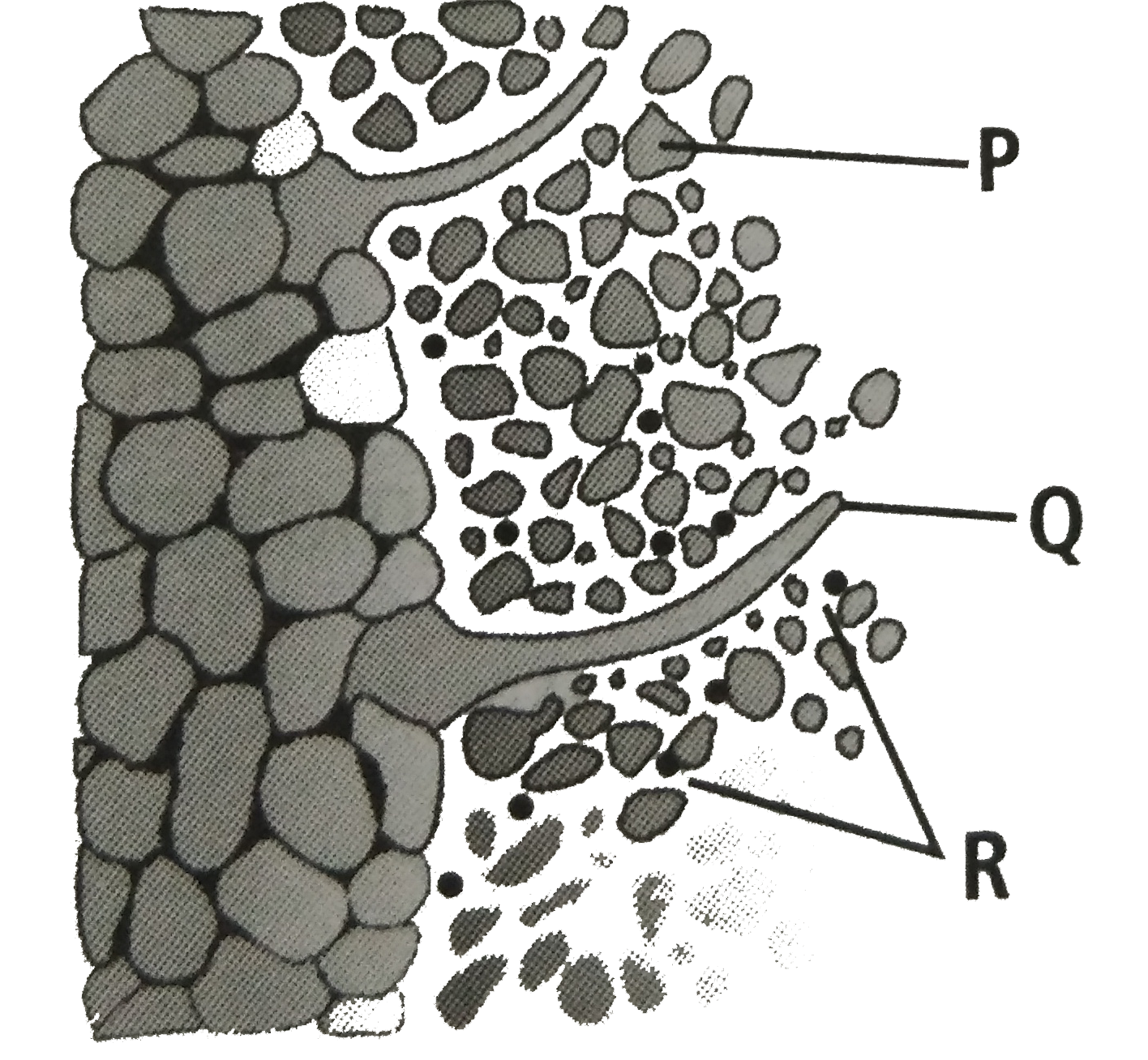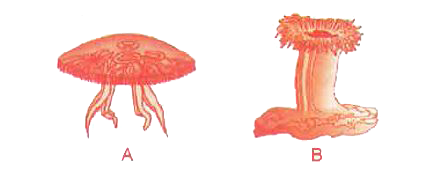Q) Refer to the given figure which shows sectional view of two types of coelom A and B. Select the correct option which represents groups of animals that possess A or B
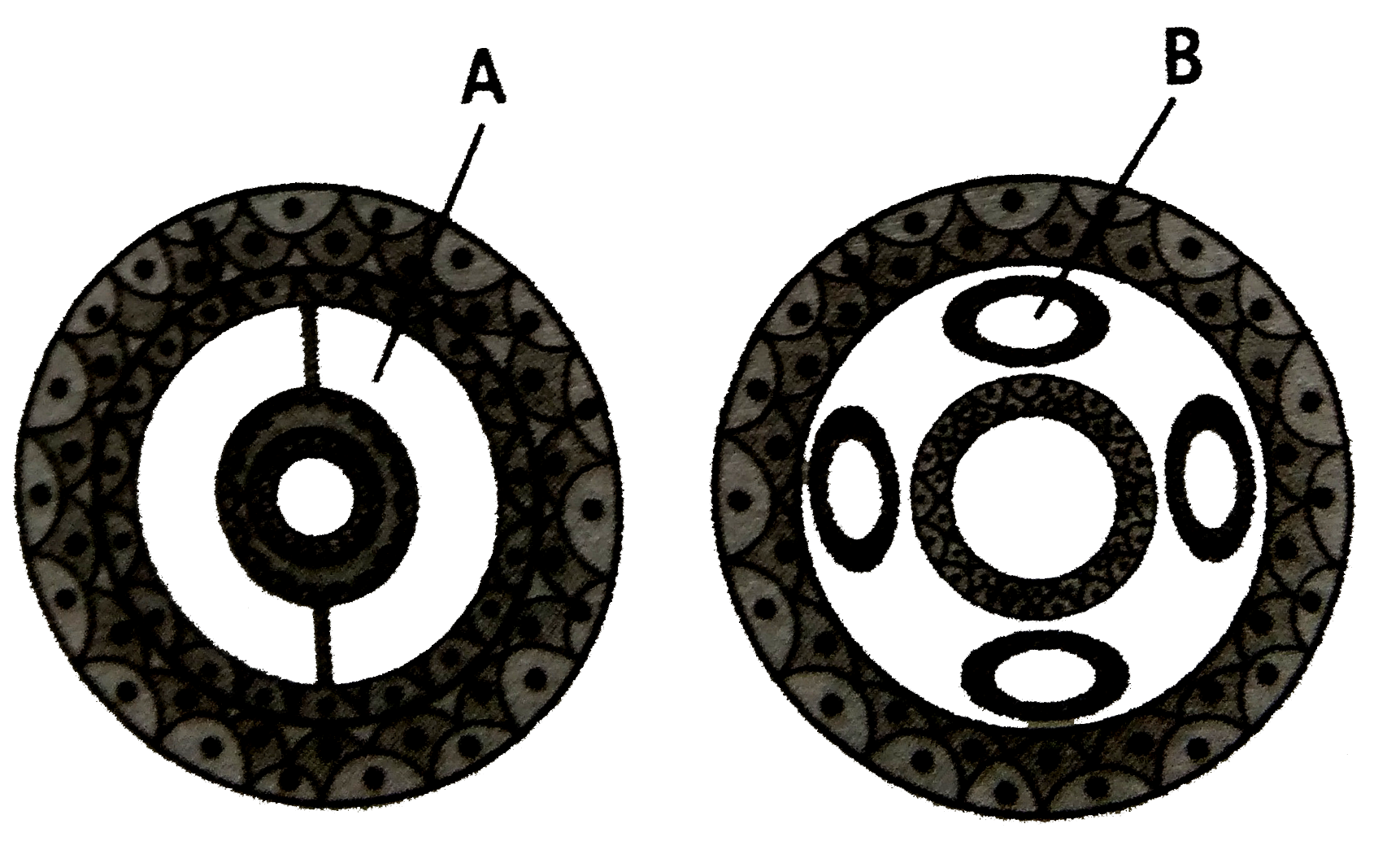
a) A - Aschelminthes adn Annelids ,B - Echinoderms and Chordates
b) A - Annelids, Echinoderms and Chordates ,B - Aschelminthes
c) A - Echinoderms and Chordates ,B - Aschelminthes and Annelids
d) A - Aschelminthes ,B - Annelids, Echinoderms and Chordates
The correct Answer is:B
Step by step video, text & image solution for Q) Refer to the given figure which shows sectional view of two types of coelom A and B. Select the correct option which represents groups of animals that possess A or B by Biology experts to help you in doubts & scoring excellent marks in Class 11 exams.
Topper's Solved these Questions
- BOOK - NCERT FINGERTPS ENGLISHCHAPTER - TEST PAPEREXERCISE - Practice Paper-350videos
TEST PAPER
- BOOK - NCERT FINGERTPS ENGLISHCHAPTER - TEST PAPEREXERCISE - Test Paper 150videos
TEST PAPER
- BOOK - NCERT FINGERTPS ENGLISHCHAPTER - TEST PAPEREXERCISE - Test Paper 350videos
TEST PAPER
- BOOK - NCERT FINGERTPS ENGLISHCHAPTER - STRUCTURAL ORGANISATION IN ANIMALSEXERCISE - Structural Organisation In Animals129videos
STRUCTURAL ORGANISATION IN ANIMALS
- BOOK - NCERT FINGERTPS ENGLISHCHAPTER - THE LIVING WORLDEXERCISE - The Living World130videos
THE LIVING WORLD
Similar Questions
Knowledge Check
- Question 1 - Select One
Refer to the given figure and select the correct option.
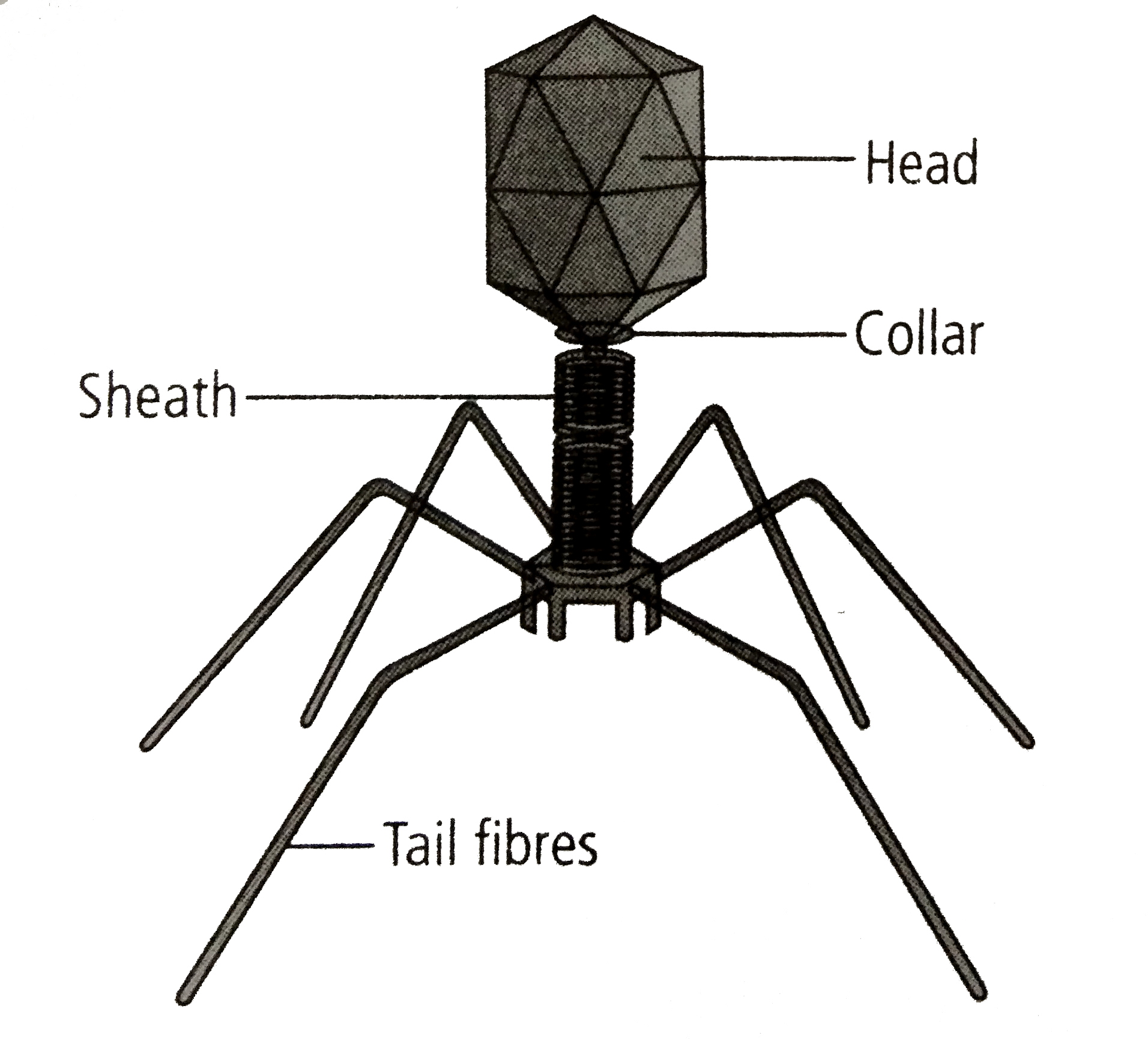 AIt is a virus that infects plant.BIt is a virus that infects animals.CIt is a virus that infects insects.DIt is a virus that insects bacteria.
AIt is a virus that infects plant.BIt is a virus that infects animals.CIt is a virus that infects insects.DIt is a virus that insects bacteria. - Question 2 - Select One
Refer to the given figures and select the correct option.
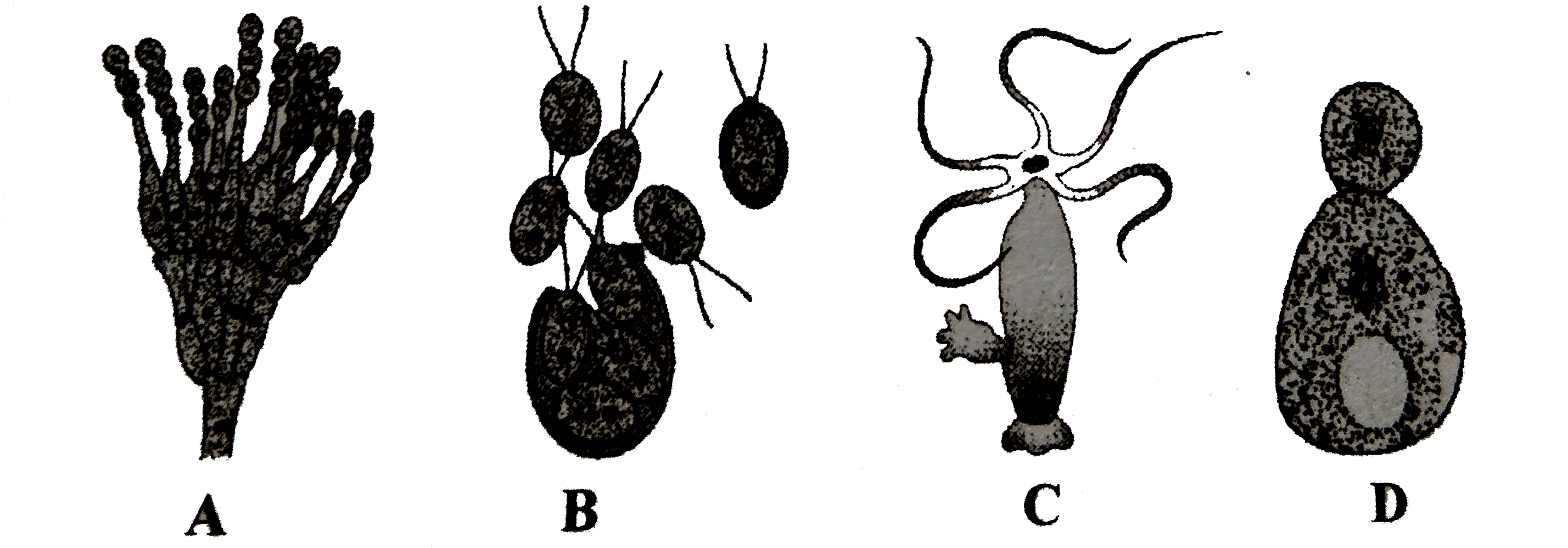 AC and D reproduce by budding that includes nuclear division only.BAll of these reproduce by the asexual mode of reproduction.CB represents multiple fission in an alga.DA shows spore formation in a moneran.
AC and D reproduce by budding that includes nuclear division only.BAll of these reproduce by the asexual mode of reproduction.CB represents multiple fission in an alga.DA shows spore formation in a moneran. - Question 3 - Select One
The given figure shows development of an embryo that undergoes two phases A and B. select the correct option regarding it.
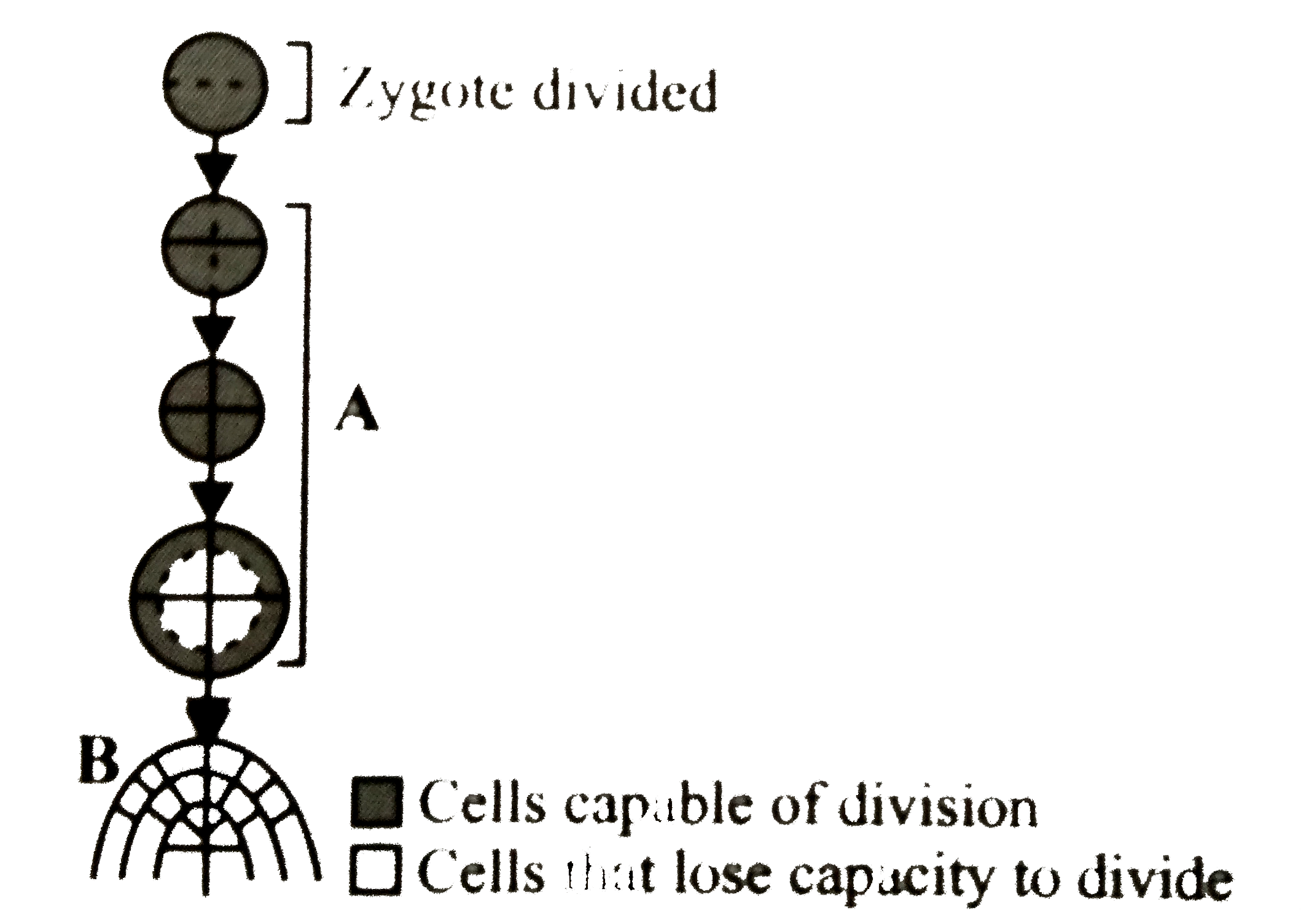 AABGeometric phaseArithmetic phaseBABArithmetic phaseGeometric phaseCABArithmetic phaseExponential phaseDABExponential phaseStationary phase
AABGeometric phaseArithmetic phaseBABArithmetic phaseGeometric phaseCABArithmetic phaseExponential phaseDABExponential phaseStationary phase
Identify the figures (A) and (B) and select the correct option.
 View Solution
View SolutionRefer to the given figures and answer
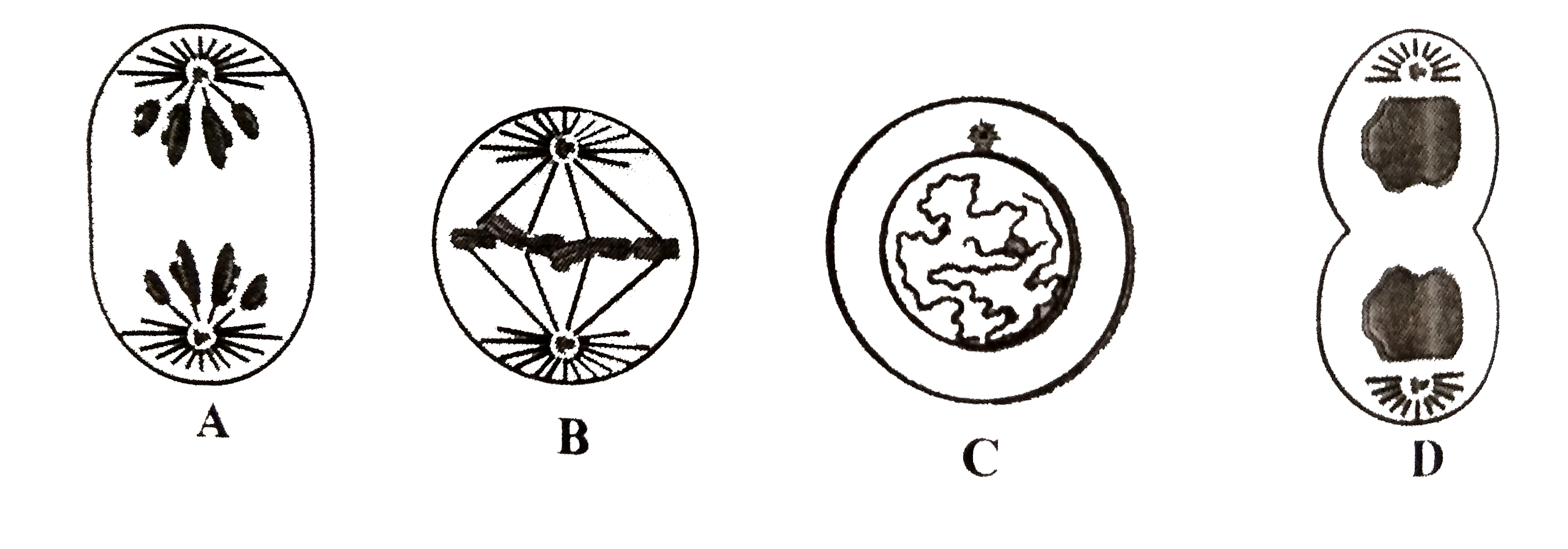
Identify the given stages of mitosis and select the correct optionView SolutionRefer to the given figures, showing relative position of different floral parts on the thalamus and select the correct option .
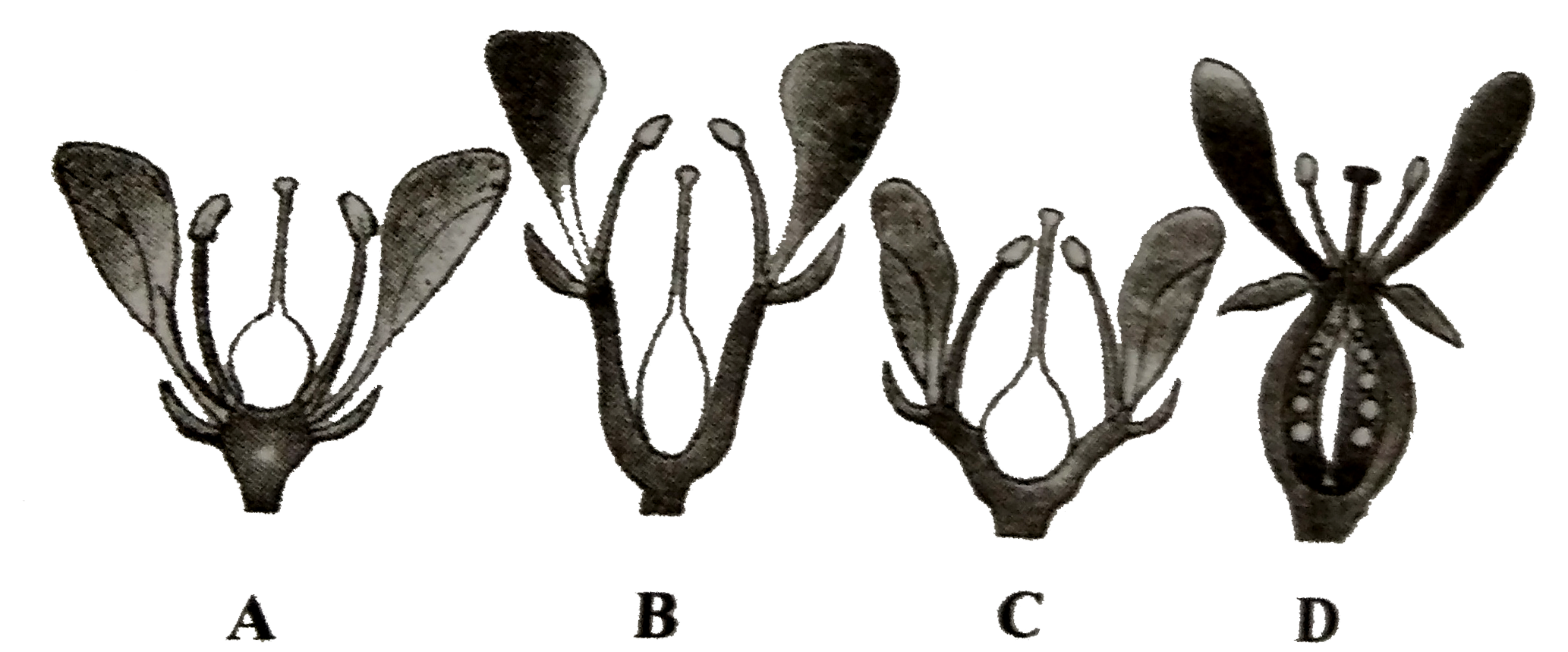 View Solution
View SolutionObserve the given diagram of the sectional view of testis.
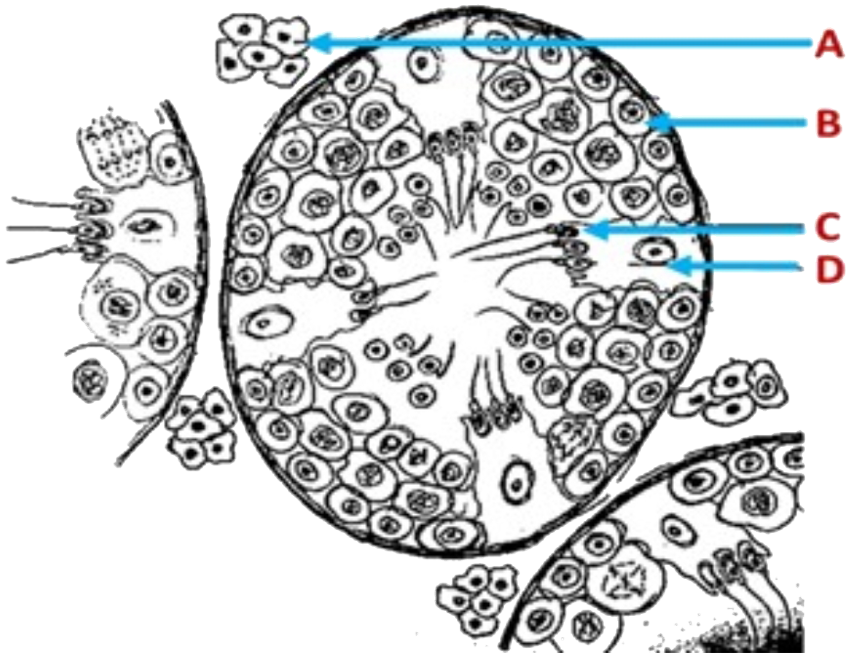
Identify the parts labelled A-D and select the correct option.View SolutionIdentify the figures A,B,C showing different types of muscle and select the correct option
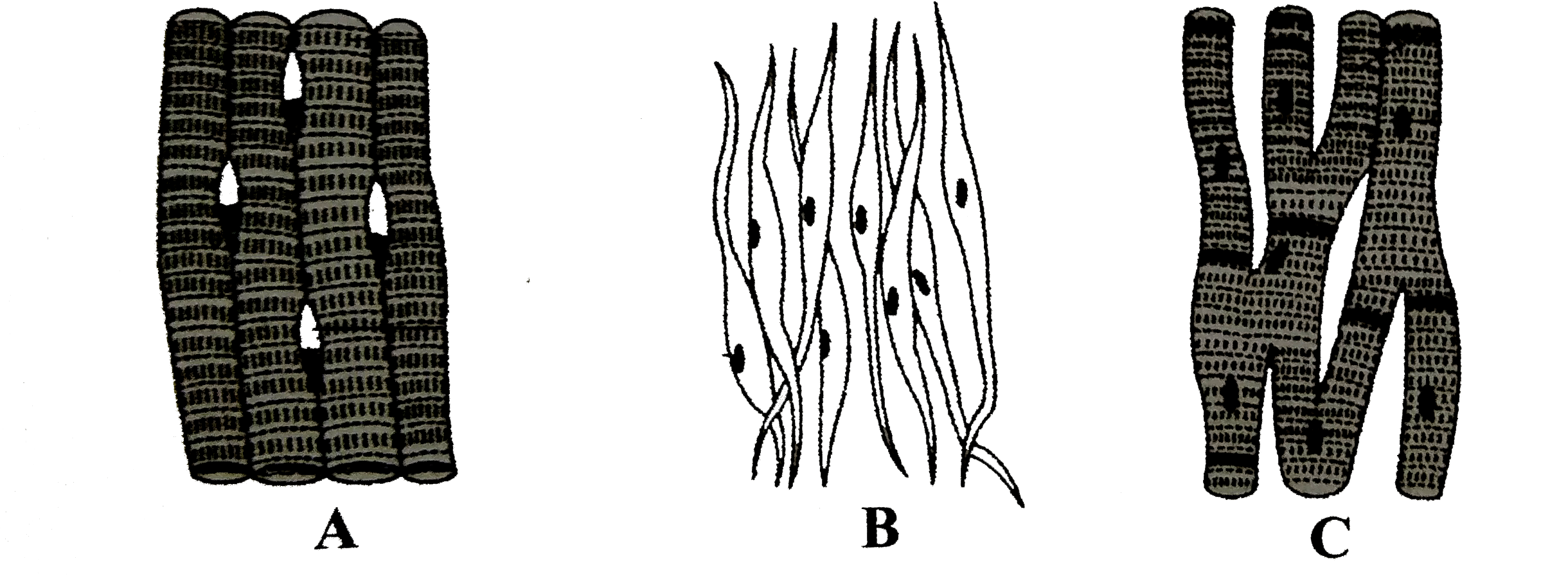 View Solution
View Solution


